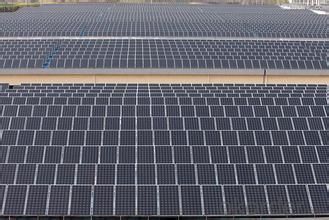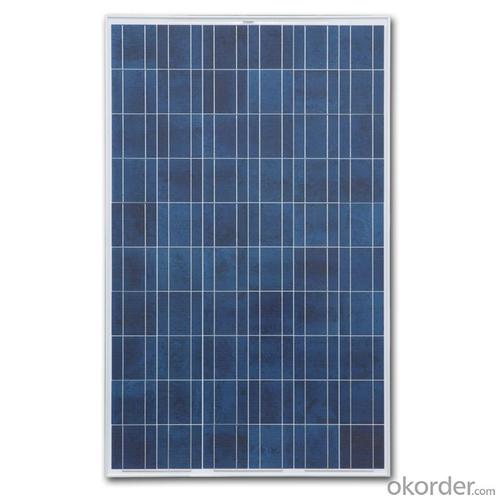High Efficiency 250W Bifacial Solar Module 250W Mono Panel for Solar System
- Loading Port:
- Shanghai
- Payment Terms:
- TT OR LC
- Min Order Qty:
- 11 watt
- Supply Capability:
- 111111 watt/month
OKorder Service Pledge
OKorder Financial Service
You Might Also Like
1.Structure of Solar Module Description
The solar module is an off-gird solar power generator, designed to provide stable and reliable electricity to homes and communities without access to grid electricity or to those regions where are short of power or even without power. The solar module is convenient to move, easy to set-up with reliable performance, making it ideal for situations where emergency power is required. It is an ideal & reliable energy source for a wide variety of applications, ranging from lighting , radios, fans ,televisions ,computers ,refrigerator. The USB port is compatible with all 5V-USB charged devices. It can also act as a back-up power source during emergency situations.
2.Main Features of the Solar Module
1).High conversion efficiencies resulting in superior power output performance.
2).Outstanding power output even in low light or high temperature conditions
3).Optimized design for ease of soldering and lamination
4).Long-term stability,reliability and performance
3.Solar Module Images


4.Solar Module Specification
| Pmax | 260W | 250W | 240W | 230W | 230W | 220W | 210W | 200W |
| Size ang Number of cells | 125mm*125mm 96 Pcs/8*12 | 125mm*125mm 96 Pcs/8*12 | ||||||
| Tolerance | ±3% | ±3% | ||||||
| Vmp | 48.33V | 48.08V | ||||||
| Imp | 5.38A | 5.18A | 4.97A | 4.76A | 4.79A | 4.58A | 4.37A | 4.16A |
| Voc | 57.8V | 57.6V | ||||||
| Isc | 5.92A | 5.69A | 5.47A | 5.24A | 5.27A | 5.04A | 4.81A | 4.58A |
| Max.syst.Oper.voltage | 1000V | |||||||
| Dioders | 4 by-pass/8 by-pass | |||||||
| Dimension | 1600mm*1067mm*50mm | |||||||
| Weight | 21Kg | |||||||
| Operate Temp.scope | #VALUE! | |||||||
| Relative humidity | 0 to 100% | |||||||
| Resistances | 227g steel ball fall down from 1m height and 60m/s wind | |||||||
| Warranty | Pm is not less than 90% in 10 years and 80% in 25 years | |||||||
5.FAQ of Solar Module
1). Q: Are you a factory or trading company?
A: We are a factory.
2). Q: Where is your factory located? How can I visit there?
A: Our factory is located in Jiangyin, Jiangsu, China, near Shanghai. You are warmly welcomed to visit us!
3). Q: How can I get some samples?
A: Please connect me for samples
4). Q: Can the price be cheaper?
A: Of course, you will be offered a good discount for big amount.
- Q: How long does it take for solar cells to pay for themselves?
- The payback period for solar cells can vary widely depending on factors such as the initial cost of the system, local energy prices, available incentives, and the amount of electricity generated. On average, it can take anywhere between 5 to 15 years for solar cells to pay for themselves through energy savings and potential government incentives.
- Q: How do solar cells compare to fossil fuel-based power generation?
- Solar cells are a more sustainable and environmentally friendly option compared to fossil fuel-based power generation. Solar cells harness energy from the sun, a renewable source, while fossil fuel-based power relies on finite resources like coal, oil, and natural gas. Solar cells produce clean energy with no greenhouse gas emissions, helping to combat climate change, whereas fossil fuel-based power generation releases harmful pollutants and contributes to air and water pollution. Additionally, solar cells require less maintenance and have a longer lifespan than fossil fuel power plants, making them a more cost-effective and efficient choice in the long run.
- Q: What is the impact of fire hazards on solar cells?
- Fire hazards can have a significant impact on solar cells, as they are highly susceptible to damage and destruction when exposed to fire. The extreme heat generated by fires can melt or deform the delicate components of solar cells, rendering them useless. Additionally, smoke and soot particles can accumulate on the surface of solar panels, reducing their efficiency by blocking sunlight. Therefore, fire hazards pose a serious threat to the functionality and lifespan of solar cells.
- Q: Can solar cells be used in commercial applications?
- Yes, solar cells can be used in commercial applications. They are widely used in various sectors such as energy production, agriculture, telecommunications, transportation, and construction. Solar panels are employed to generate electricity for commercial buildings, provide power to remote areas, run water pumps, charge electric vehicles, and more. The cost-effectiveness, sustainability, and growing efficiency of solar technology have made it a viable option for businesses to reduce their carbon footprint and save on energy costs.
- Q: Can solar cells be used for space applications?
- Yes, solar cells can be used for space applications. They are commonly used to power satellites and spacecraft by converting sunlight into electricity.
- Q: What is a thin-film solar cell?
- A thin-film solar cell is a type of solar cell that is made by depositing one or more thin layers of photovoltaic material onto a substrate, such as glass or plastic. These cells are lightweight, flexible, and can be produced using less material, making them more cost-effective than traditional silicon-based solar cells. However, they typically have a lower efficiency compared to silicon-based cells.
- Q: Can solar cells be used in air conditioning systems?
- Yes, solar cells can be used in air conditioning systems. Solar cells can generate electricity from sunlight, which can then power the air conditioning unit, reducing the reliance on traditional energy sources and making the system more environmentally friendly and cost-effective.
- Q: Can solar cells be used on backpacks or camping gear?
- Yes, solar cells can be used on backpacks or camping gear. They can be integrated into the design of backpacks or attached to camping gear to harness solar energy and convert it into electricity, allowing for convenient charging of devices or powering small electronics while on the go.
- Q: Can solar cells be used in agricultural settings?
- Yes, solar cells can be used in agricultural settings. They can be installed in farms and greenhouses to generate clean and renewable energy for various agricultural operations such as irrigation, lighting, and powering machinery. Solar cells are a sustainable and cost-effective solution that can help reduce reliance on non-renewable energy sources in agricultural practices.
- Q: How do solar cells impact global warming?
- Solar cells have a positive impact on global warming as they generate electricity using sunlight, a renewable energy source, without emitting greenhouse gases. By reducing the reliance on fossil fuels, solar cells help mitigate climate change and decrease carbon emissions, thus slowing down the progression of global warming.
Send your message to us
High Efficiency 250W Bifacial Solar Module 250W Mono Panel for Solar System
- Loading Port:
- Shanghai
- Payment Terms:
- TT OR LC
- Min Order Qty:
- 11 watt
- Supply Capability:
- 111111 watt/month
OKorder Service Pledge
OKorder Financial Service
Similar products
Hot products
Hot Searches
Related keywords


































